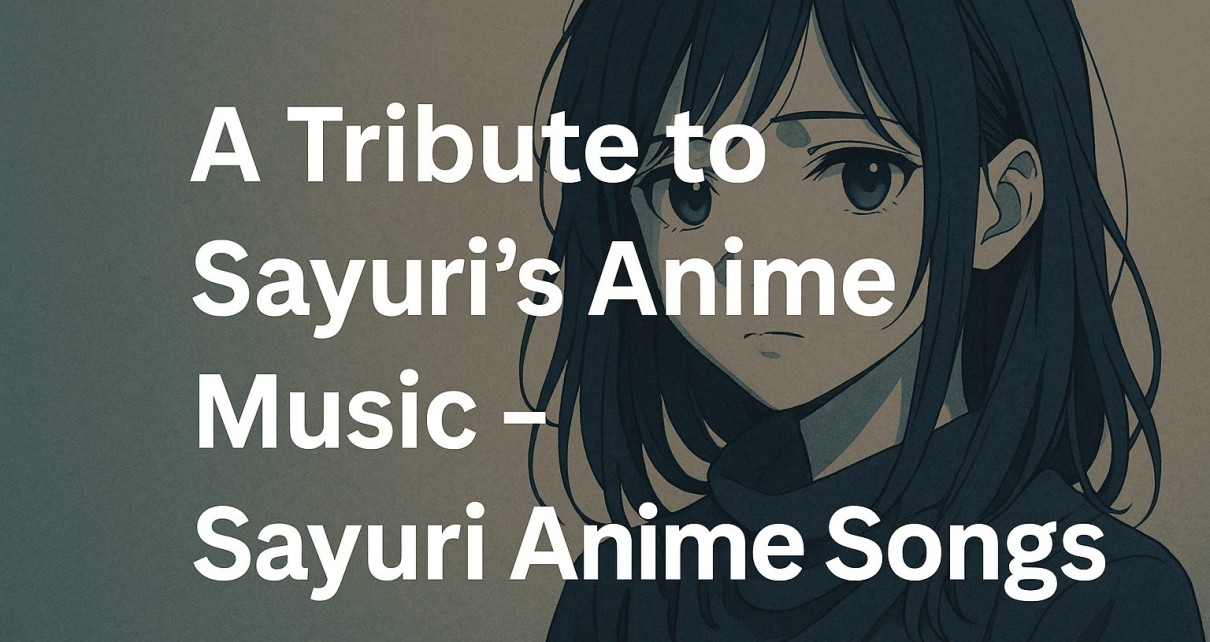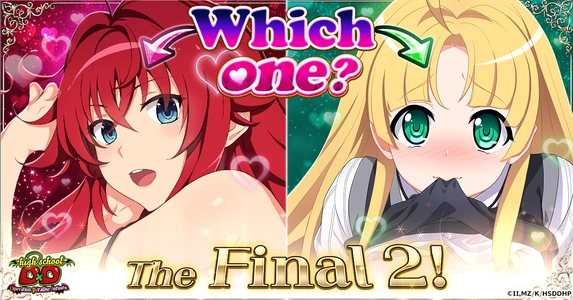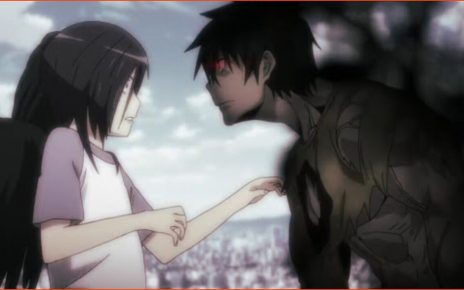Top Trending Web Game – Are you in? List of G123 Games ➡️
1 Arifureta: From Commonplace to World’s Strongest – Rebellion Soul Arifureta: From Commonplace to World’s Strongest – Rebellion SoulThis Synergist… is the world’s strongest. |
2 Peter Grill and the Philosopher’s Time – Defender of Virtue 2 Peter Grill and the Philosopher’s Time – Defender of Virtue 2The Strongest Man is Fighting for His Virtue?! |
3 So I’m a Spider, So What? Ruler of the Labyrinth So I’m a Spider, So What? Ruler of the LabyrinthThe labyrinth survival fantasy tale begins! |
4 Queen’s Blade Limit Break Queen’s Blade Limit BreakJoin the Beautiful Warriors Now! |
5 Negima! Magister Negi Magi – Mahora Panic Negima! Magister Negi Magi – Mahora PanicTrue magic results from courage of the heart. |
Sayuri, a name that resonates with anime fans around the world, has become synonymous with powerful, emotional, and beautifully composed music. Her voice, paired with the deep meaning of her lyrics, has captured the hearts of anime lovers everywhere. Sayuri’s songs are not just music; they are the emotional backbone of the anime she’s part of. Known for her ability to convey deep emotions through simple yet captivating melodies, Sayuri’s songs often complement the themes and moods of the anime series they are featured in. From heartwarming ballads to intense, soul-stirring anthems, her songs stand as a testament to her talent and contribution to the anime music world.
What sets Sayuri apart from other anime music artists is the depth and authenticity that she brings to her songs. Her voice has a unique, raw quality that can range from soft and gentle to powerful and energetic. This ability to adapt her style to the varying tones of anime series makes her one of the most sought-after artists in the industry. Each song she creates has a distinct emotional impact, which allows her to connect with listeners on a personal level. It’s no wonder that Sayuri’s music has become iconic in the anime world.
Table of Contents
Popular Sayuri Songs
Sayuri’s musical journey began when she made her solo debut in March 2015 with her first live performance in Tokyo. At just 18 years old, she released her first single, “Mikazuki” (“Crescent Moon”), in August of the same year. This song became a significant milestone in her career, as it was chosen to be the ending theme for the anime Rampo Kitan: Game of Laplace. The debut single not only showcased her incredible vocal talent but also set the stage for what would be a long-lasting influence on anime music. She also performed “Mikazuki” on THE FIRST TAKE, a platform where artists often showcase their raw vocal talent.
In February 2016, Sayuri released her second single, “Sore wa Chiisana Hikari no Youna” (“It’s Like a Small Light”). This beautiful track, written and composed by Yuki Kajiura, was used as the ending theme for the Erased anime, a series that captivated audiences with its time-traveling storyline and emotionally charged narrative. The delicate, heartfelt nature of this song perfectly matched the themes of the anime, helping to elevate its emotional weight.
2017 marked another milestone for Sayuri with the release of her fifth single, “Heikousen” (“Parallel Line”), in March. The song was selected as the ending theme for the anime Scum’s Wish, a story that deals with complex and often painful relationships. “Heikousen” reflected the series’ bittersweet and introspective tone, perfectly capturing the emotional turbulence of the characters.
Sayuri’s career continued to soar in 2018, with the release of her sixth single, “Tsuki to Hanataba” (“Moon and Bouquet”), in February. This song was used as the ending theme for Fate/Extra Last Encore, a visual novel adaptation of the Fate franchise. The ethereal quality of “Tsuki to Hanataba” captured the fantasy elements of the anime, adding a sense of wonder and mystery to its conclusion.
Later in 2018, Sayuri collaborated with MY FIRST STORY on the song “Reimei” (“Dawn”), which was released in November and used as the second opening theme for Golden Kamuy. This energetic and dynamic track captured the spirit of the anime’s action-packed and adventurous narrative. Sayuri’s collaboration with MY FIRST STORY marked a significant moment in her career, expanding her versatility and showcasing her ability to blend her unique style with different musical genres.
Sayuri’s contribution to the My Hero Academia anime came in Season 4, where she performed the ending theme, “Koukai no Uta” (“The Song of the Voyage”). The song perfectly embodied the series’ themes of courage and perseverance, resonating with fans who had grown attached to the characters’ journeys. Sayuri’s performance on THE FIRST TAKE of this song allowed her to bring her signature emotional depth to the track, leaving a lasting impression on fans worldwide.
In May 2020, Sayuri released “Aoibashi,” which was used as the second ending theme for the anime Sing “Yesterday” for Me. This song was featured in episodes 7-19 of the series, adding to the anime’s introspective and melancholic atmosphere. Unfortunately, there are no official uploads of the song, but it can be found on platforms like Crunchyroll, where fans can still appreciate the song’s delicate beauty.
Sayuri also contributed to the EDENS ZERO anime in 2020 with “Sekai no Himitsu” (“World Secret”), the second ending theme. This track, with its haunting melody and evocative lyrics, fit seamlessly into the sci-fi fantasy world of EDENS ZERO, further cementing Sayuri’s legacy as an artist who could bring depth and emotional resonance to any genre.
Her final anime song, “Hana no Tou” (“Tower of Flower”), was released in July 2022 and served as the ending theme for Lycoris Recoil, a series that gained attention for its unique storyline and captivating animation. “Hana no Tou” was a fitting farewell to Sayuri’s contributions to anime music, leaving fans with a poignant reminder of her talent and influence.
In Memory of Sayuri
Sayuri’s music has undoubtedly left an indelible mark on the anime industry, and her work will continue to inspire future generations of anime fans and artists alike. Her songs will forever remain etched in the hearts of those who cherished her voice, and she will always be remembered for the beauty she brought to the world of anime music.
Here are some of her most memorable songs that will forever be a part of the anime music landscape:
-
“Mikazuki” (Rampo Kitan: Game of Laplace)
-
“Sore wa Chiisana Hikari no Youna” (Erased)
-
“Heikousen” (Scum’s Wish)
-
“Tsuki to Hanataba” (Fate/Extra Last Encore)
-
“Reimei” (Golden Kamuy)
-
“Koukai no Uta” (My Hero Academia Season 4)
-
“Aoibashi” (Sing “Yesterday” for Me)
-
“Sekai no Himitsu” (EDENS ZERO)
-
“Hana no Tou” (Lycoris Recoil)
Her songs are available for streaming on various platforms like Youtube, and fans can continue to enjoy her timeless contributions to anime music.
Why Sayuri’s Music Resonates
What makes Sayuri’s music so impactful is not just the beautiful melodies, but the emotional depth she brings to each track. Her songs are carefully crafted to align with the emotional core of the anime they are featured in, enhancing the viewers’ connection to the story. Sayuri has a unique ability to bring out the raw emotions of a series—whether it’s the hopefulness in Yuri on Ice, the heartache in Koi to Uso, or the sense of self-discovery in ReLIFE. Her music goes beyond being just an accompaniment to the anime; it becomes an essential part of the storytelling itself.
FAQs
-
What makes Sayuri’s anime music special?
Sayuri’s anime music is special because of her unique voice and the emotional depth of her songs. She can convey complex feelings through simple yet powerful melodies, making her music resonate with fans on a personal level. -
What are some of Sayuri’s most popular songs in anime?
Some of Sayuri’s most popular songs in anime include “History Maker” from Yuri on Ice, “Koi to Uso” from Koi to Uso (Love and Lies), and “Kimi to no Yakusoku o Kazoeyo” from ReLIFE. -
How does Sayuri’s music enhance the anime it’s featured in?
Sayuri’s music enhances the anime by perfectly matching the emotions and themes of the series. Her songs add depth and intensity to the anime’s narrative, making the experience more immersive for viewers. -
Has Sayuri won any awards for her anime music?
Yes, Sayuri has received numerous accolades for her work in anime music, including awards for best opening and ending themes. Her contributions to the anime music industry have been widely recognized and celebrated. -
Where can I listen to Sayuri’s songs?
Sayuri’s songs can be found on various music streaming platforms like Spotify, Apple Music, and YouTube. Many of her tracks are also available on anime soundtracks, which can be purchased or streamed online.
Final Thoughts
Sayuri’s untimely passing leaves a void in the world of anime music that will be difficult to fill. In her short 28 years, she gifted us with a remarkable body of work, a treasure trove of songs that are not just beautiful melodies but emotional journeys. Each song, whether it was an opening, ending, or insert theme, was a reflection of her incredible talent and her ability to connect deeply with her audience. Her voice resonated with fans on a personal level, and the themes she sang about—love, loss, hope, and struggle—are universal experiences that transcend cultural boundaries.
Her music brought depth to the anime series it accompanied, adding emotional layers to the stories and enhancing the viewer’s connection with the characters. From Yuri on Ice to Lycoris Recoil, Sayuri’s songs became more than just background music—they were an integral part of the anime’s narrative, capturing the essence of each series and amplifying its emotional impact. Sayuri’s songs will continue to echo in the hearts of those who grew up with them, and they will remain a permanent part of the anime music landscape.
Beyond the anime world, her artistic vision and dedication to her craft will continue to inspire musicians and storytellers alike. The beauty of her work lies in its timeless quality—her music transcends the specific series it was part of and speaks to emotions that are shared by all. Sayuri’s legacy will live on through her songs, through the fans who cherished them, and through the artists she inspired.
As we say goodbye to this gifted artist, we hold on to the comfort that her music will continue to bring joy, nostalgia, and emotional connection to those who listen. Sayuri may have left this world far too soon, but her voice and her music will remain eternal, living on in the hearts of anime fans for generations to come.
Rest in Peace Sayuri!








